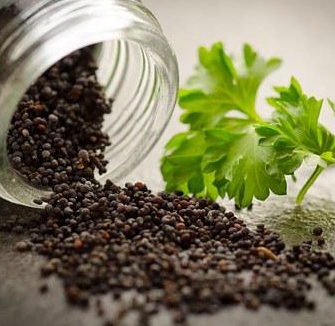WHEN HIKING IN THE WOODS, KNOW WHAT THIS PLANT LOOKS LIKE,
IT MIGHT JUST SAVE YOUR LIFE.
Yarrow is one of those plants that everyone should know, both what it does and what it looks like. It is truly invaluable when it comes to first-aid situations.
Yarrow is a subtle plant; it grows short, has thin stalks, small web-like leaves, and tiny flowers that grow in clusters, but it can pack a punch.
Common and widespread throughout North America, it can be found anywhere from forests, meadows, to peoples front yards; however, most garden varieties have lost most of their medicinal actions and have the potential to be sprayed with bug killer…so avoid using grown varieties unless you are growing it yourself.
The latin name of yarrow comes from Achilles, the Greek God famed for his indestructibility, and this warrior plant is no different. Its main power comes from its ability to stop bleeding, and crucial aspect of remaining alive (especially when battling Titans).
Fresh yarrow leaves can be bruised between the fingers and applied directly to wounds. The antimicrobial actions of the plant will help keep infection at bay, and the astringent and hemostatic properties will stop the bleeding. The soft, fine, lattice-work of the leaves also provides an excellent background for blood clots to form.
The leaves can also be placed in the nose in the case of nosebleeds.
Yarrow tea is great for sitz baths to help heal hemorrhoids and post-childbirth vaginal tissue. The tea is also helpful for digestive issues relating to leaky gut and ulcers.
As a tincture, it can be helpful in slowing excessive menstrual bleeding, particularly during peri-menopause. It is also an herb that was commonly carried by midwives to help prevent postpartum hemorrhaging.
Young or old, this is a wonderful plant to get to know.
MATERIA MEDICA: YARROW
Latin Name: Achillea millefolium
Family: Asteraceae
Botanical Description:
An erect perennial plant, with one or more stems. Stems are between 0.2 and 1 meter in height, with leaves distributed evenly along their length. The leaves near the middle and bottom of the stem are typically the largest, and the leaves have varying levels of hairiness. The leaves are 5–20 cm long, bipinnate or tripinnate, almost feathery, and arranged spirally on the stems. The roots are in a spreading rhizomatous form. (The Herbarium)
Part used: Flowers & Leaves
Harvesting Guidelines:
Harvest yarrow flowers and leaves when the plant is in full bloom. Harvest in the morning after the dew dries and before the sun’s heat evaporates the lighter essential oils. (The Herbarium)
Key Constituents: Volatile oils, sesquiterpene lactones, tannins, flavonoids, alkaloids, phenols, coumarins
Energetics:
- Warm
- dry
- bitter
Actions:
- Analgesic
- anti-fungal
- anti-inflammatory
- antiseptic
- antispasmodic
- aromatic
- astringent
- carminative
- diaphoretic
- febrifuge
- hemostatic
- styptic
- vulnerary
Uses:
- Bleeding both internally and externally
- Bruised leaves can be applied directly to cuts and scrapes to stop bleeding and provide antimicrobial protection
- Great to help stop nosebleeds
- Taken as a tea, hot or cold, it can help slow excessive menstrual bleeding
- Can be applied to hemorrhoids, is great in after-birth sitz bath tea, varicose veins, and blood blisters
- Drinking the hot tea can help increase body heat to break a fever
- Tea is good for helping to stop bleeding from ulcers
- Dried yarrow can be powdered and sprinkled onto wounds as well
- Yarrow as a Remedy for the Flu
Preparation and Dosage
- Tea – Infusion of 1-2 tsp dried yarrow in 1 cup boiling water, infused 10-15 minutes, 3 times per day. During fevers, drink hourly.
- Tincture – 30-60 drops 2-3 times/day.
- Dosage information from Medical Herbalism by David Hoffman.
Safety considerations:
- Over-use can be drying to the system.
- People sensitive to Asteraceae plants should be cautious using yarrow due to allergic skin reaction potential


